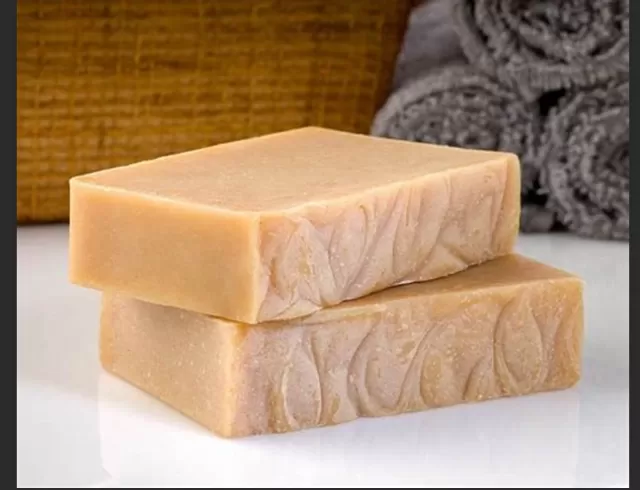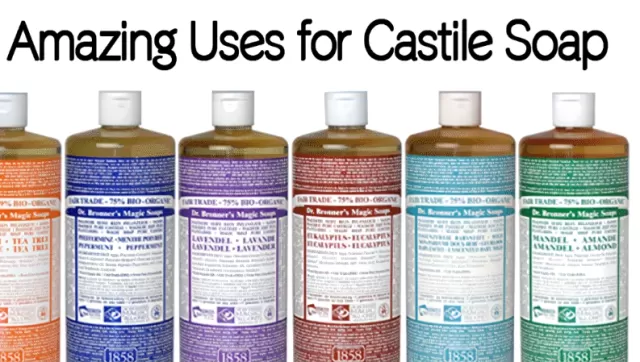Castile Soap: Your Natural Cleaning Solution. Castile soap proves to be a true household hero with its versatility and organic composition. Crafted from vegetable fats, this minimalist cleaner transcends typical cleaning boundaries, making it an ideal choice for various tasks in your home. From handling stubborn grime on floors and surfaces to effortlessly conquering greasy dishes, Castile soap showcases its cleaning prowess with every use. Its effectiveness extends even to laundry duties, providing consistently soft and fresh results load after load. Beyond its cleaning capabilities, the simplicity of Castile soap adds to its appeal—it’s user-friendly and cost-effective. With this eco-friendly and multi-purpose cleaner in your arsenal, you’ll find Creative Ways to utilize every last drop from the bottle. Castile soap stands as a testament to the enduring power of uncomplicated solutions in maintaining a clean and healthy home.
What Is Castile Soap

Castile soap is a natural and environmentally friendly cleaning solution crafted from plant-based oils, making it entirely vegan and biodegradable.
Originating from the Castile region of Spain, this soap has gained popularity for its gentle yet effective cleaning properties. According to Robin Murphy, founder of ChirpChirp, a home cleaning company, Castile soap is particularly suitable for various Cleaning Tasks, such as washing dishes, mopping floors, and even laundering delicate items by hand.
Various brands may add their unique touch to Castile soap, incorporating ingredients like olive, coconut oil, sunflower, and jojoba oils, along with other botanical fats, as mentioned by Vanessa Garcia, a professional cleaner with TaskRabbit.
While potassium hydroxide is typically included in the formulation, its chemical composition transforms after saponifying the oils into soap and glycerin.
Notably, Castile soap stands out for what it excludes – no animal products or synthetic ingredients are used in its production.
Some brands may enhance the soap with essential oils to provide a pleasing scent. As a versatile and eco-conscious cleaning option, Castile soap has found its place as a go-to solution for those seeking a more natural approach to household cleaning.
.
.
.
.
.
Versatile Household Uses for Castile Soap

Carpet Cleaner: Castile soap serves as an effective and budget-friendly carpet cleaner.
Kathy Cohoon suggests mixing a few drops of castile soap with about 3 cups of hot water. For tougher stains, you can enhance the solution with 1/4 cup of hydrogen peroxide.
Apply the mixture to the stained area, scrub in circular motions, repeat if necessary, and allow it to dry.
Hand Washing Dishes: Its mild yet powerful formula makes castile soap an excellent dishwashing soap.
Vanessa Garcia recommends using it straight from the bottle or diluted up to 50 percent with water. Its natural and less chemically laden composition makes it a preferred option for those conscious of what comes into contact with their dishes.
Dish Washing Detergent: Castile soap can also be incorporated into your dishwashing machine detergent.
When diluted, you can create your own mixture by combining 8 ounces of castile soap with a cup of water and 3 tablespoons of vinegar or lemon juice. Dispense 1 tablespoon into the detergent compartment before each use, shaking the mixture to ensure thorough mixing.
Hard Floor Cleaner: Safe for sealed, non-porous hard flooring, castile soap offers a simple yet effective cleaning solution.
Kathy Cohoon advises mixing a teaspoon of castile soap into a bucket of warm water and, if desired, adding essential oils. Mop the floor and dry as usual, ensuring a conservative amount to avoid residue and streaks.
Countertops: As a gentle alternative to harsh cleaners, castile soap is suitable for keeping countertops clean.
Marla Mock recommends a ratio of 1/4 cup of castile soap to a bucket of hot water. Use a gentle cloth, like a microfiber towel, for cleaning.
Bathroom Surfaces: A mixture of castile soap and water proves effective for cleaning bathroom surfaces, including toilet bowls, bathtubs, and vanity sinks.
Kathy Cohoon suggests making a multi-purpose spray or applying the mixture with a microfiber cloth, emphasizing its ability to provide a thorough yet chemical-free clean.
Washing Your Walls: For a fresh and clean home, castile soap can be used to wash walls.
Mix 1/8 cup of castile soap with a 2-gallon bucket of hot water. Dip a sponge mop into the mixture, squeeze out excess water, and rub it up and down your walls.
Rinse with hot water if any residue is noticed.
Laundry Detergent: Castile soap offers a natural alternative to traditional laundry detergents, making it ideal for those with sensitive skin.
Marla Mock recommends using it just like detergent or as a pre-treatment for stains, with a recommended ratio of 1/6 cup of castile soap added directly to the washing machine’s water.
Limitations of Castile Soap: Surfaces to Avoid

While castile soap proves versatile for various household cleaning tasks, there are specific surfaces where its use is not recommended.
Cleaning professional Robin Murphy highlights the following surfaces to avoid when using castile soap:.
Glass: Castile soap might pose challenges when cleaning glass surfaces.
Achieving the correct dilution for effective cleaning without leaving a residue can be tricky. If used on glass, it’s crucial to find the right balance to ensure optimal results.
Porous Stone (Marble or Limestone): Avoid using castile soap on porous stone surfaces such as marble or limestone.
The nature of these materials may not align well with the soap, and alternative cleaners may be more suitable for maintaining the integrity of such surfaces.
Cast Iron: Castile soap is not recommended for cleaning cast iron.
The porous nature of cast iron cookware may not respond well to this type of cleanser, and using alternative methods specifically designed for cast iron maintenance is advisable.
Unsealed Wood Floors: Unsealed wood floors should not be cleaned with castile soap.
The soap’s composition may not be suitable for this type of flooring, and using it could potentially harm or compromise the finish of unsealed wood.
Stainless Steel (Without Rinsing): While castile soap can be used on stainless steel surfaces, it’s essential to rinse thoroughly afterward.
Failure to do so may result in streaks and residue on stainless steel, detracting from the desired clean and polished appearance.
Being mindful of these limitations ensures that castile soap is used effectively and safely, optimizing its benefits for various cleaning tasks around the house.
*The information is for reference only.